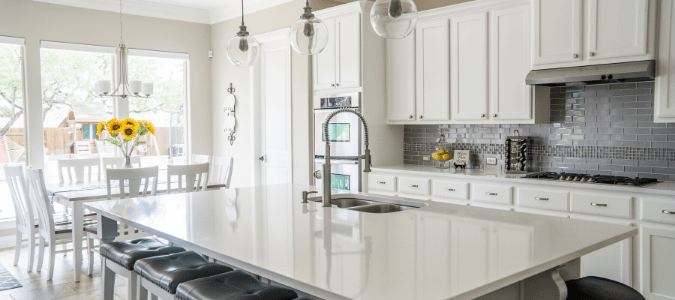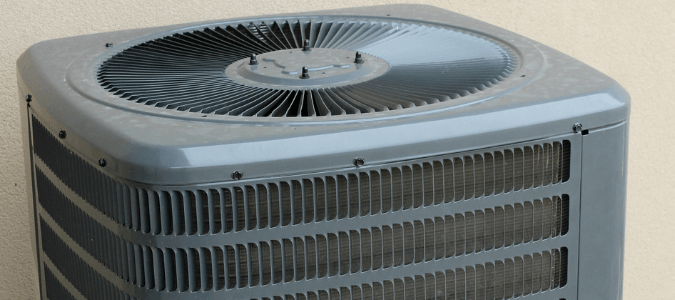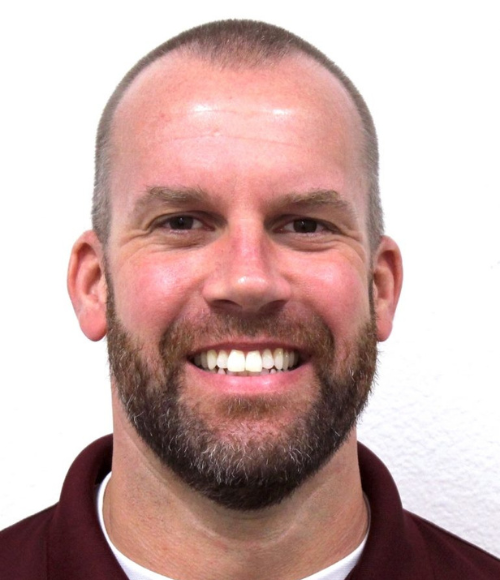
When you enter your home after spending time outside on a hot day, there’s nothing quite like the gust of cool air coming from your air conditioning vents. That’s why if you find yourself in a situation where you have no cold air coming from your AC, panic can quickly start to set in. Most likely, you switch into high gear, trying to determine what went wrong and what you can do to get your air conditioner working normally again.
There are several things that could be preventing your AC from blowing cold air, including a problem with your thermostat, dirty filters, a clogged condensate line, a blocked compressor or dirty coils. Your air conditioner is a machine with many parts that need to work together. If any one of these parts isn’t working correctly, you wind up with a system that doesn’t cool anything down or maybe doesn’t blow air at all. Depending on what part is malfunctioning, it might be a simple fix or you might need professional help. Let’s review some of the most common reasons your air conditioner might not be working correctly and other related problems and possible solutions.
Troubleshooting Problems With Your Air Conditioner
Your heating and cooling system may be something you take for granted—that is, until it stops working correctly. Learning more about what might be wrong is often the first step to getting your home back to being cool and comfortable again.
Thermostat Problems
If your thermostat is set incorrectly, you won’t get the results you want. In order to get cool air from your air conditioner, the thermostat must be set to a temperature below the current indoor temperature. Otherwise, the system doesn’t consider cooling necessary.
If your thermostat is blowing warm air, check to make sure that your thermostat’s fan setting is set to automatic, not on. When your fan is set to on instead of automatic, it constantly blows air through your vents, even when your air conditioning unit has not cooled the air. Once you set your fan to automatic, it should only push air through your vents after it has been cooled. If this is what happened to you, problem solved!
If neither of these quick fixes work, there could be a problem with the wiring in your thermostat. In this case, you’ll likely want to contact a specialist who can test your thermostat’s wiring to determine where the problem is and make any needed repairs.
Dirty Filter
As our air conditioners work, air gets pushed through a filter to prevent any dust, pollen, dirt and other debris from circulating throughout our home. Depending on the quality of your filter and how frequently you use your unit, this filter can get clogged in as little as a month. When this happens, your system will struggle to pull in air, resulting in your unit overheating and shutting off to prevent damage. In certain situations, when your thermostat reads that the temperature in your home is not cooled down to the specified temperature it may turn back on and then turn off again. When your AC is short cycling like this, your home won’t cool down and you’ll end up with a sky-high energy bill.
Newer units have been manufactured to automatically shut off when an air filter gets too dirty to help keep the motor from overheating and getting damaged. Older units, on the other hand, tend to keep struggling for air.
If you can’t remember the last time you replaced or cleaned your filter, check it to see if this is the problem. If your filter looks dirty, dusty or damaged, go ahead and change your air conditioning filter and see if the air now feels cooler in your home. Determining how often you need to check your filters and making this part of your regular routine can prevent many AC problems and extend your system’s lifespan.
Clogged Condensate Drain Line
Part of the cooling process is stripping humidity from the air. That water has to go somewhere. Your system is designed to direct this excess moisture outside or to the house plumbing. Sometimes, that drain can get clogged with dirt, dust, debris or even mold, and the water doesn’t have anywhere to go. Most units have an automatic shut-off switch that activates if the condensate tray fills up. That shut-off will lead to either no air coming out of your vents or your AC blowing warm outdoor air, depending on the unit. If you’d like to investigate this on your own, check your condensate drip pan to see if it is full and if it is, you’ll need to unclog and clean out your condensate drain line before turning your unit back on. If you have easy access to your drain hose’s connection, you might be able to address this problem yourself.
To unclog your drain line, start by turning off your air conditioning unit and grabbing a bucket to catch any liquid that may have collected in your drain pan. Then, remove the cleaning port cap and inspect inside the drain hose for any blockages. If you find a small blockage that is within your reach, you can attempt to remove it yourself by pushing a stiff wire brush through the line.
If the blockage is large or you can’t access the drain connection, contacting a professional will most likely be the best way to get your air conditioning working. A professional will have the necessary tools to access your blockage and get it cleared out, so cool air is circulating through your home again.
Dirty Coils
Dirty condenser coils can cause serious problems. Condenser coils are designed to transfer the heat from your home into the outdoors. If your condenser coils get dirty, your unit won’t be able to get rid of the heat that was in your home. Your unit will be working overtime and will eventually overheat.
Dirty condenser coils can lead to a variety of different issues, including your system not regularly circulating cooled air. We’ll now go into more detail about this type of AC problem, as well as what you need to do if your AC keeps tripping your breaker.

Signs of Dirty Condenser Coils and How to Clean Them
Our condenser coils play an important role in our cooling system. This component pushes the warm air that we don’t want in our home outdoors. However, because this part of your system is located outside, it is vulnerable to a buildup of dust, pollen, dirt, vegetation and other debris. Additionally, the location of your condenser makes it easy to forget about it, since it’s out of sight when you are inside your home.
Signs that you may have dirty condenser coils include:
- Warm air blowing through your home
- Higher than average energy bills
- More calls from you to your AC repair provider for a number of issues, and a pattern of more frequent problems cropping up
Your condenser coils will likely need to be cleaned twice a year: once at the beginning of the air-conditioning season and once at the end. Cleaning condenser coils involves disassembling your AC unit because the coils are protected by a guard filter. While you can clean your condenser coils yourself, most HVAC professionals offer this service as part of their regular maintenance package.
If you want to better understand what’s involved in cleaning your coils, you should know that power needs to be shut off to both the inside and outside units before getting started. After the power is off, your technician will carefully remove the compressor cage guard and set it aside. While the cage guard can be cleaned with a spray of the hose, the coils require a special condenser coil cleaner. This cleaner dissolves dirt and grime without damaging the coils. Once this cleaner is applied, allowed to sit and then rinsed off with a hose, the parts can air dry, the metal guards can be reattached and the unit can be turned back on.
While some of us might like the idea of having an air conditioning maintenance checklist to follow to keep your system running correctly, the reality is that having a professional handling your air conditioning maintenance is often the best way to make sure these routine tasks get done.
Sometimes, your AC unit will blow warm air—or nothing at all—because the breaker has tripped. While this could happen once, you probably have a problem if this happens multiple times.

AC Unit Keeps Tripping Breaker
Circuit breakers protect your electrical system from damage when excessive power is flowing to a circuit. There are some things you can try if you notice that the electrical switch in your panel connected to your heating and cooling system has switched to the “Off” position more than once.
When this happens the first time, you can try to address the issue by turning off your AC unit, then going and flipping the breaker back to “On”. Leave the unit off for an hour, then turn it back on. If there was a momentary fluke surge, you shouldn’t see any further problems. If the breaker trips again, you have to do some more in-depth investigations. Always leave the circuit turned off during this troubleshooting process. A tripped breaker means that something has gone wrong in the electrical system and you don’t want to risk electrocution.
If your AC unit is pulling more electricity than normal, it might be because there is a blockage somewhere in the system that is making it more difficult for it to work. If the air filter is dirty, the unit is probably using more energy to cool things in spite of the blockage. Try replacing or cleaning the filter, as that should lower the energy draw and help keep the unit from tripping the breaker.
As we’ve mentioned above, dirty condenser coils can cause similar problems. Since it’s harder for the unit to vent extra heat, it needs to use more power to cool your home. That can lead to tripping the breaker because of the extra power draw. If this is what’s happening with your unit, having your coils cleaned should get things back to normal.
The final two possible reasons your AC keeps tripping the breaker won’t be something you’ll likely be able to address without a significant amount of technical know-how. First, your unit might have a short circuit somewhere. This happens when your electrical nodes make a more direct, but incorrect, route. Trying to fix a short circuit can lead to electrocution. Because of this, it is generally better to let a professional handle this type of issue. The good news is that it might be a quick fix for them. The bad news is that this is no guarantee—you may need a new unit.
The other possibility is that your compressor has broken down. If your compressor isn’t working, the unit is going to draw much more power and trip its circuit breaker. In most cases, if your compressor has broken, a licensed professional will recommend you replace the entire AC unit.
Since it can be difficult for most homeowners to accurately diagnose an AC issue on their own, a licensed heating and cooling specialist is often best equipped to identify your AC problem and give you a quote for needed repairs, or even a replacement. If you want your home cool quickly, contacting a specialist is typically your best bet.
ABC Is Your Full-Service AC Provider
Although homeowners may want to try to fix a problem with their cooling system on their own, many of these repairs require specialized training. If you’re experiencing a problem with your unit, get in contact with ABC Home & Commercial Services. Our specialists are fully licensed and are available all day and all night for any AC repair you might need. You can also rely on us for an honest assessment of the state of your current unit and advise you on whether it’s time for an air conditioning system replacement.
